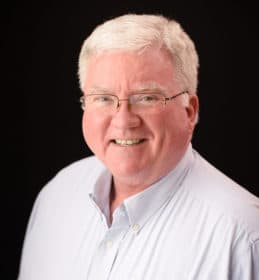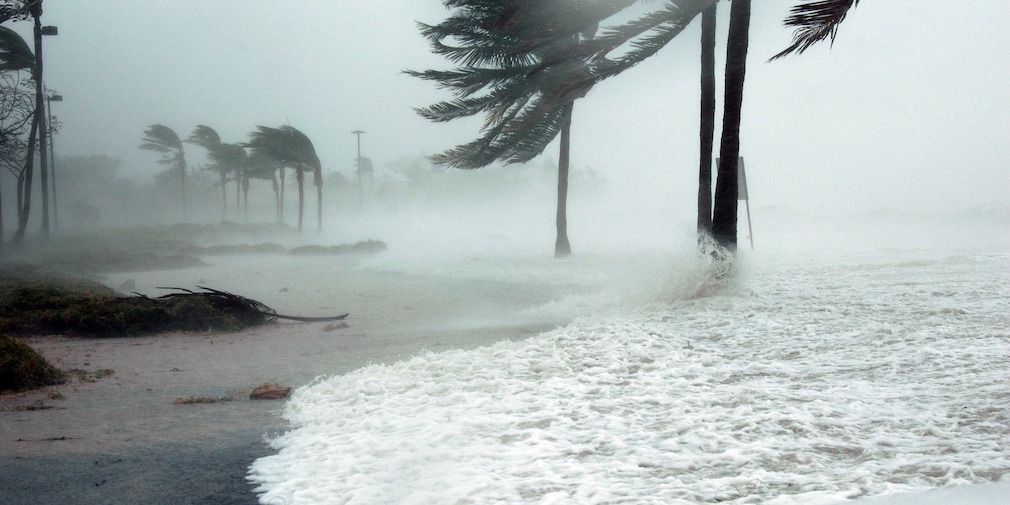By George Irwin, ReNew Petra

Image: ReNew Petra
Hurricanes can bring massive amounts of rain, wind gusts up to 75 mph, hail of all sizes and lightning. These conditions can be hard on many outside structures, including solar installations. As hurricane season approaches in the Southeast, it’s time to think about your solar installation, its operations and maintenance (O+M) team, and its readiness to get your site up and running after a potential disaster.
Solar farms require significant maintenance throughout the year—grass needs to be mowed, repairs need to be made, and inspections need to be performed. But beyond the regular maintenance and standard repairs, events like hurricanes can result in a range of issues like broken solar panels, damaged wires, and uprooted trees.
The basics of any O+M team include real-time site monitoring, site performance analysis, maintenance reports, site optimization, and identification of recurring problems. What’s more, O+M teams, like those at ReNew Petra, do preventative maintenance, which includes regular inspections, periodic and as-needed maintenance, and thermal imaging and analysis. Having an effective O+M team allows for site optimization, leading to maximum production, and thus, maximum revenue. When disaster strikes, responsive maintenance includes four-hour emergency dispatch, 24-hour general response, and warranty replacement. Constant monitoring, benchmarking, and diligent preventive maintenance—paired with good equipment selection and construction practices—enable sites to have high average availability during operation.
Hurricanes can cause many issues for a solar installation, including damaged equipment and environmental hazards like downed trees. It’s critical to be prepared for when a hurricane may be approaching, to inspect the site as soon as a hurricane has passed, and most importantly, to communicate. Having fluid and consistent communication between the O+M technicians and the installation’s owners ensures that expectations are met, and decisions can made sooner rather than later, especially during a time when decisions need to be made quickly and conclusively.
Beyond being prepared to repair and reenergize as soon as possible after a hurricane, it’s important to ensure the solar installation is constructed to a standard that can withstand storm conditions. The Rocky Mountain Institute has several recommendations for sites prone to strong storms, including specifying high-load PV modules, high structural engineering standards, bolt hardware locking solutions and that all hardware be selected based on 25-year corrosion resistance. They also recommend collaborating across organizations and manufacturers to ensure the utmost quality for the solar installation. Our team saw the benefits of this firsthand, after working with our subcontractor partners on construction of a commercial and industrial installation, where during Hurricane Florence, not a single panel was lost atop a commercial building in the coastal town of Morehead City, North Carolina.
Part of the difficulty of preparing for a hurricane is that every hurricane is different and changes quickly as it approaches land. The National Oceanic and Atmospheric Administration (NOAA), the leading experts in hurricane tracking and monitoring, do not put out hurricane predictions until several days before a hurricane is set to make landfall. This can make it very difficult to plan ahead in the summer months. Plus, more than one hurricane can hit an area in a given hurricane season. This makes monitoring and communication even more critical to combating potential damage.
These tactics were recently put into practice during Hurricane Florence in the summer of 2018, where a nearby a solar farm was impacted and the entire Duke Energy grid in the area was knocked out. First things first, technicians needed to inspect the site immediately after the storm and before power was restored by the utility, confirming that no major equipment was damaged. At that time, they also completely isolated the site from the grid so that when the utility restored power, the site could be re-energized under supervision. This is a critical step in hurricane response as damage could have been done to the site that was not obvious during visual inspection.
Beyond getting the site up a running properly as soon as possible, an O+M team needs to ensure communication is a priority. Before a hurricane hits, an O+M team should confirm that landowners and other interested parties were aware that a hurricane is on its way. After the hurricane makes landfall, the team ought to share daily reports on the status of the site and the repairs for the following weeks. Communication is a key part of any disaster readiness plan as it sets the expectations of the team to the owners and ensures that no one is left in the dark during a time when there could be many questions.
Being proactive is always better than being reactive when it comes to taking care of your solar farm, especially during high-risk times like hurricane season. Putting in place an O+M team that understands and knows what needs to be done in the aftermath is critical. As hurricane season begins here in the southern states, make sure your team is prepared and ready to communicate, repair and re-energize.
ReNew Petra is a vertically-integrated, renewable energy development, construction and O&M company involved in the engineering and construction of solar, landfill gas, and biogas. ReNew Petra has the technical expertise to provide their own internal operations, maintenance, and asset management, as well as provide these services to outside partners.
This content is protected by copyright and may not be reused. If you want to cooperate with us and would like to reuse some of our content, please contact: editors@pv-magazine.com.









By submitting this form you agree to pv magazine using your data for the purposes of publishing your comment.
Your personal data will only be disclosed or otherwise transmitted to third parties for the purposes of spam filtering or if this is necessary for technical maintenance of the website. Any other transfer to third parties will not take place unless this is justified on the basis of applicable data protection regulations or if pv magazine is legally obliged to do so.
You may revoke this consent at any time with effect for the future, in which case your personal data will be deleted immediately. Otherwise, your data will be deleted if pv magazine has processed your request or the purpose of data storage is fulfilled.
Further information on data privacy can be found in our Data Protection Policy.